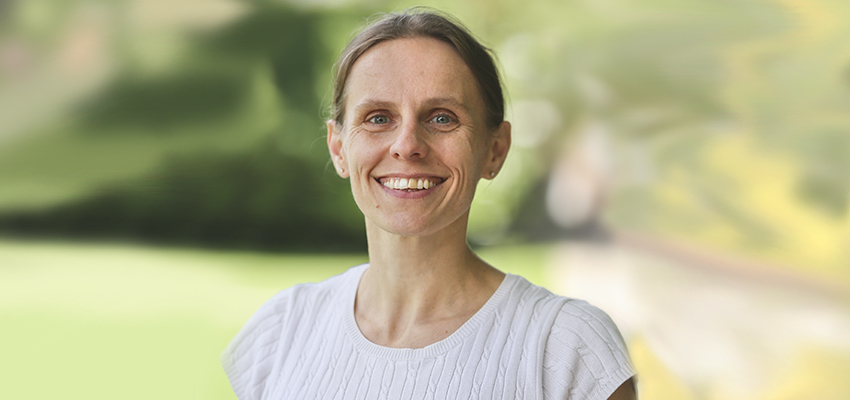
HWS News
11 October 2017 • STEM Hebb Advancing Exoplanet Research
Assistant Professor of Physics Leslie Hebb is collaborating with a group of scientists from across the country on a project that improves with previously unattainable precision the ability to observe exoplanets in other solar systems. A scientific paper co-authored by Hebb and her colleagues describing the innovation has been published in The Astrophysical Journal and has gained media attention.
The research team developed a custom-designed optic device called a diffuser that attaches to ground-based telescopes being used to identify exoplanets planets that orbit stars other than the sun. The device enables the measurement of light intensity at a capacity that rivals the highest quality observations from space telescopes. It improves ground-based observations by reducing light distortions generated from the Earth's atmosphere.
"Our goal was to develop a device that could allow for extremely precise measurements of brightness from ground facilities so that we can monitor exoplanets detected by space satellites," says Hebb, who previously received a grant from the Research Corporation for Science Advancement (RCSA) to support the work. "Once we're able to confirm that a planet exists in another solar system, we can use that information to figure out characteristics like size and variations in transit time, and properties that could help us understand if it could host life."
Astronomers worked with nanofabrication labs at RPC Photonics in Rochester, N.Y., to develop the beam-shaping diffusers, which are small pieces of glass that can mount onto a variety of telescopes. The low-cost and adaptability of the new diffuser technology is anticipated to have a substantial impact for astronomers.
"This technology is especially relevant considering the impending launch of NASA's Transiting Exoplanet Survey Satellite (TESS) early in 2018," says NASA Earth and Space Science Fellow Gudmundur Stefansson, lead author on the paper and a Penn State University graduate student. "It is up to ground-based facilities to rapidly and reliably follow-up on candidate planets that are identified by TESS."
In all test cases, astronomers say the images produced with a diffuser were more stable than those using conventional methods (i.e. they maintained a relatively consistent size, shape and intensity, which is integral in achieving precise measurements). Using a focused telescope without a diffuser produced images that fluctuate in size and intensity. A common method of defocusing the telescope deliberately taking the image out of focus to spread out light yielded higher photometric precision than focused observations, but still generated images that fluctuated in size and intensity.
In September 2016, Hebb and her colleagues commissioned the new device on the 3.5 meter telescope at the Apache Point Observatory, N.M. Hobart and William Smith are members of the Astronomical Research Consortium, which owns and operates several telescopes at the observatory. Since then, for the project, she has planned and conducted many test observations with the new diffuser on this telescope. At HWS, Hebb has also run smaller test observations from the Perkin Observatory and hopes to welcome a student researcher to work with her on future projects. Hebb is continuing to prepare for future observations with satellites like NASA's TESS by continuing to observe at Apache Point Observatory and at the Perkin Observatory while developing additional collaborations to implement the technology on other telescopes across the globe.
"A school like Hobart and William Smith can do science on par with the great science institutions," Hebb says. "We want to keep making world-class science accessible to students."
Hebb joined the HWS faculty in 2012. She received a B.S. in electrical engineering from University of Denver, and her M.S. and Ph.D. in astrophysics from Johns Hopkins University. Hebb also conducted post-doctoral research at University of St. Andrew's and at Vanderbilt University. She served as a member of the visiting faculty at University of Washington.
Research for the diffuser project was funded by a Scialog grant from RCSA and supported by the Center for Exoplanets and Habitable Worlds, a Leifur Eiriksson Foundation Scholarship, the NASA Earth and Space Science Fellowship Program, the National Science Foundation, and the Penn State Astrobiology Research Center.
The research teams Oct. 5 announcement and complete list of project members is available on Penn State's website.
